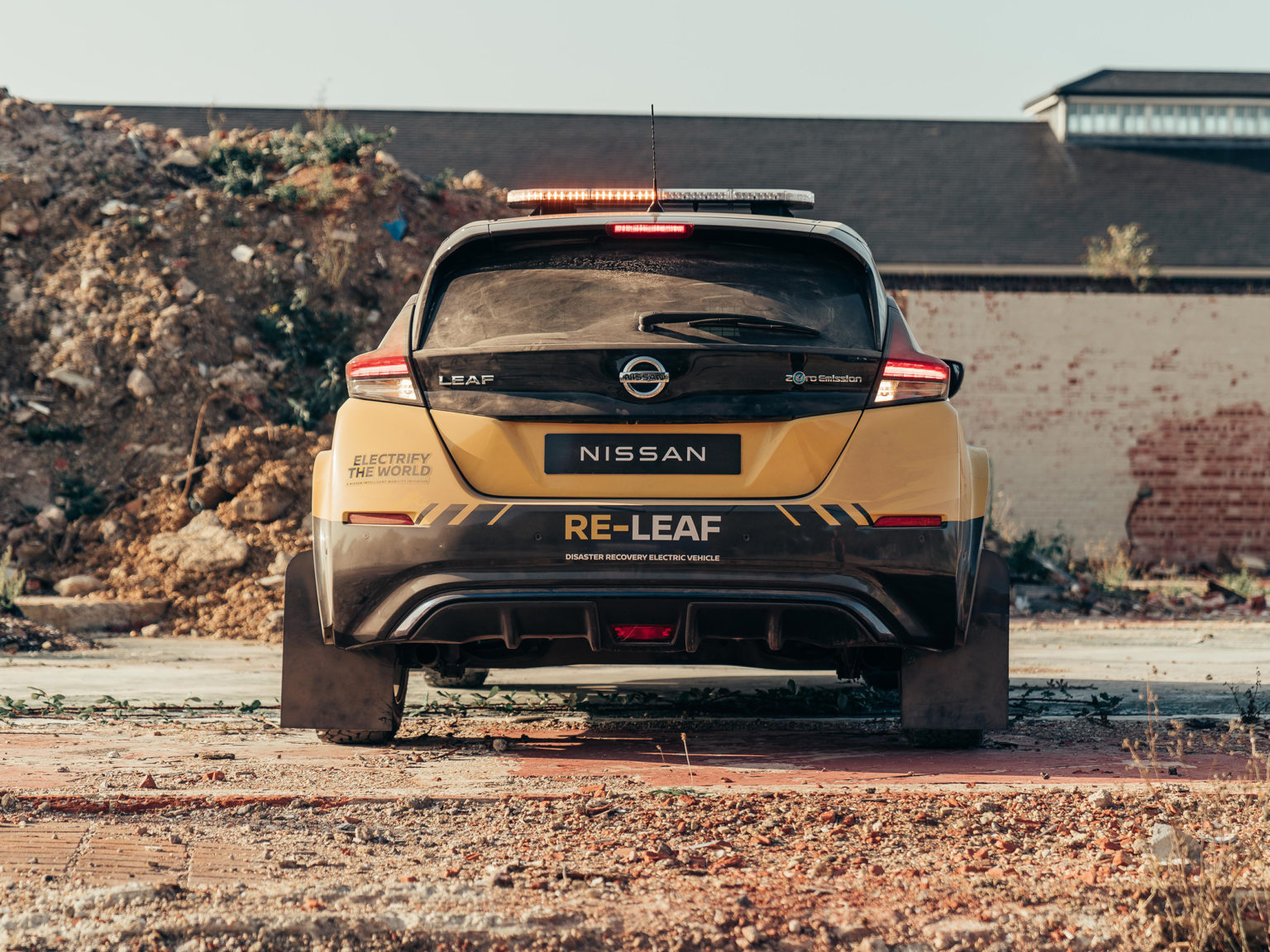When you need disaster relief, this Nissan Leaf is there for you, at least in theory. The Nissan Re-Leaf, an electric emergency response vehicle concept vehicle, takes the idea of portable electricity to a new level.
The Re-Leaf isn’t just all-show. It’s a working prototype that is designed to serve as a mobile power supply that can be used following natural disasters or extreme weather events. The Leaf was the world’s first mass-market electric vehicle when it debuted a decade ago.
Natural disasters are the biggest cause of power outages. A 2019 World Bank report found natural shocks and climate change caused 37 percent of outages in Europe between 2000 and 2017, and 44 percent of outages in the US over the same period.
Usually, when a disaster hits, the time for electricity supply to be restored is typically 24-48 hours if the damage is not too extensive. During that time, electric vehicles can provide mobile emergency power.
The Re-Leaf has a few modifications to make it disaster-ready. That starts at the exterior of the vehicle where weatherproof plug sockets mounted directly to the exterior enable 110- to 230-volt devices to be powered by the car’s lithium-ion battery.
It is designed to drive into disaster zones and provide a mobile power supply. The integrated energy management system can run medical, communications, lighting and other life-supporting equipment.
The cars can also act as mobile storage batteries to supply homes with electricity during non-emergency situations by using the LEAF’s bi-directional charging ability, a standard feature of the model since its introduction in 2010. This means the LEAF can not only ‘pull’ power to recharge the high-capacity battery, but also ‘push’ it back to the grid through V2G (Vehicle-to-Grid) technology, or directly to electronic devices through V2X (Vehicle-to-everything).
Acting as a portable power station, the latest generation Nissan LEAF e+ with a fully charged 62 kilowatt-hour (kWh) battery can provide enough electricity to power the average UK household for around six days.
This concept may look futuristic but the future is already here. Nissan has used the Leaf to provide emergency power and transportation following natural disasters since 2011.
The Re-Leaf sports an amber color scheme, a nod to the ancient Greek word for amber – electron – the origin of the word ‘electricity’. There’s a roof-mounted LED light bar that flashes amber lights as well. Nissan has raised the car by 70 mm and given it a wider track and all-terrain tires on 17-inch wheels.
Inside, the rear seats have been removed and the floor levelled to provide storage for essential equipment. A custom bulk-head cage also separates the front seats from the cargo area.
A bespoke pull-out desk extends from the cargo area with a 32-inch LED screen and dedicated power supply creating an operational hub to run communications from and manage the recovery process.








